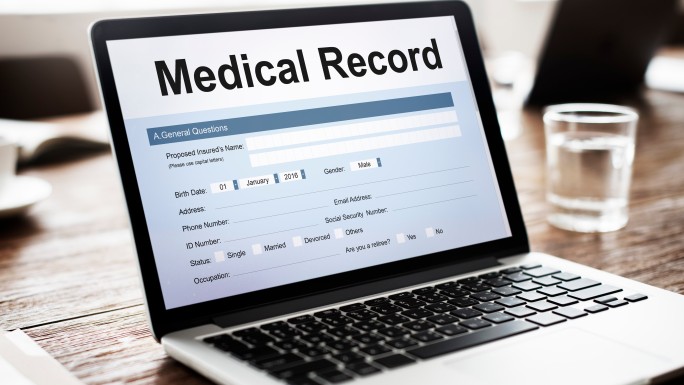Understanding PACS: A Guide for Medical Professionals
In the fast-evolving landscape of medical technology, the Picture Archiving and Communication System (PACS) stands out as a pivotal innovation. PACS revolutionizes how medical images are stored, accessed, and shared, enhancing the efficiency and effectiveness of healthcare delivery.
This blog will equip medical professionals a comprehensive understanding of PACS, from its basic roles to its advanced functionalities, benefits and linked systems
Overview of PACS
PACS (Picture Archiving and Communication System) is a system that stores electronic image data collected from diagnostic imaging equipment, allowing viewing of those images from many different terminals via the internet.
PACS has 3 main roles:
Intermediating
PACS acts as an intermediary, transmitting image data between diagnostic imaging equipment and information systems
Storing
PACS stores images received from diagnostic imaging equipment into storage
Managing
PACS manages captured image data
Through the internet, PACS connects to:
- Diagnostic imaging equipment
- Image processing station
- The terminal performs image inspection
- The terminal generates an interpretive report
The model of the PACS server significantly impacts its performance, including storage capacity and retrieval speed. Healthcare facilities should select the appropriate server model based on the volume of images to be stored and the scale of the hospital
SAN (Storage Area Network)
SAN is used when PACS requires large storage capacity and high data transfer speeds.
DAS (Direct Attached Storage)
DAS is a low-cost option used for long-term storage of infrequently accessed images or for backup purposes.
NAS (Network Attached Storage)
NAS is similar to DAS in its use and functionality.
Benefits of PACS
1. Improved Access
One of the primary benefits of PACS is the enhanced accessibility it provides to medical images. With digital storage and network capabilities, healthcare professionals can retrieve images quickly and from multiple locations, including remote and rural areas. This immediate access to imaging data facilitates faster diagnosis and treatment planning, significantly improving patient care efficiency. Additionally, it allows for more flexible work environments, enabling radiologists and other specialists to review and analyze images without being tied to a specific location.
2. Enhanced Collaboration
PACS facilitates better collaboration among medical professionals. It allows multiple healthcare providers to access and view the same images simultaneously, regardless of their location. This capability is particularly useful for multidisciplinary teams that require input from various specialists, such as in tumor board meetings or complex case discussions. The ability to share and discuss images in real-time enhances the quality of consultations and ensures that patients receive comprehensive and well-informed care.
3. Cost Efficiency
Transitioning to a PACS can result in significant cost savings for healthcare institutions. By eliminating the need for physical film, storage space, and the associated costs of film processing and transport, PACS reduces operational expenses. Furthermore, the digital nature of PACS minimizes the risk of lost or damaged images, which can be costly and time-consuming to replace. Over time, the investment in PACS infrastructure can lead to substantial financial benefits by streamlining workflows and reducing waste.
4. Better Diagnosis
PACS contributes to more accurate and timely diagnoses by providing high-resolution images that can be manipulated and analyzed in various ways. Advanced viewing tools allow radiologists to zoom, rotate, and adjust contrast, enhancing their ability to detect subtle abnormalities. Moreover, the digital format supports integration with advanced imaging technologies, such as 3D reconstruction and image fusion, further improving diagnostic capabilities. These enhancements lead to more precise and reliable diagnostic outcomes, ultimately benefiting patient health.
5. Patient Care
The overall impact of PACS on patient care is profound. Faster access to images and reports means that patients receive diagnosis and treatment plans more quickly, reducing anxiety and improving outcomes. The seamless sharing of imaging data among different departments and specialists ensures continuity of care and prevents delays caused by misplaced or unavailable films. Additionally, the improved accuracy and detail of digital images contribute to more effective and targeted treatments, enhancing the overall quality of patient care.
Basic functions of PACS

- Viewing medical images
- Categorizing and organizing medical images
- Measurement functions such as points, angles, areas of medical images
- Marking medical images
- Editing medical images such as resizing, adjusting attributes
- Attaching DICOM tags to medical images
Linked systems
1. Integration with imaging diagnostic devices (HIS/RIS)
When imaging begins, the diagnostic imaging device (CT, MRI, etc.) will retrieve information from the worklist using the DICOM MWM (Modality Worklist Management) function.
After imaging is completed, the diagnostic imaging device will send the test results back to the RIS via the MPPS (Modality Performed Procedure) function.
Simultaneously, the diagnostic imaging device uses the DICOM Image Storage function to add information obtained from the RIS to the captured images, reorder images, or add annotations using the image review system to create easily diagnosable images, and then send them to the PACS. (This process is called image review).
2. Integration with the Image Reading System
After imaging, the images will be reviewed and analyzed by specialized radiologists to diagnose the condition. The results of the image reading are written into a report and sent back to the referring doctor. To ensure the quality of the image reading, each image will be reviewed twice by two different doctors.
The image reading system is linked with PACS to reference images. The system allows report creation by directly typing from the keyboard, using templates, selecting pre-registered documents, or voice recognition using a microphone, etc
Conclusion
In conclusion, the Picture Archiving and Communication System (PACS) is a transformative technology in modern medical imaging, enhancing the storage, access, and management of medical images. It offers numerous benefits, including improved accessibility, enhanced collaboration, diagnostic accuracy, cost efficiency, and better patient outcomes. Seamlessly integrating with systems like RIS, HIS, and Image Reading System. PACS facilitates efficient data exchange and comprehensive patient records, streamlining operations and enabling thorough diagnosis. As technology evolves, the capabilities of PACS will continue to expand, making it essential for medical professionals to be proficient in utilizing this powerful system to enhance workflow and patient care.





